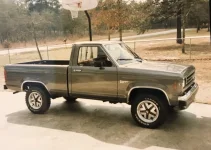You're right, GM put the kibosh on all 10W-40s, even though it was only lower grade brands causing the ring sticking problem. The word on the inside was that many were fine, but rather than say "use this brand, not that one," GM lowered the hammer on all of them.I don't remember a particular brand of oil that was blamed and I don't believe GM picked on any brand. But they did pinpoint 10w-40 so I suspect all the brands were included.
I'm also thinking GM didn't want to say certain brands were acceptable, therefore giving competition to Goodwrench, when they wanted to grow their own brand.



